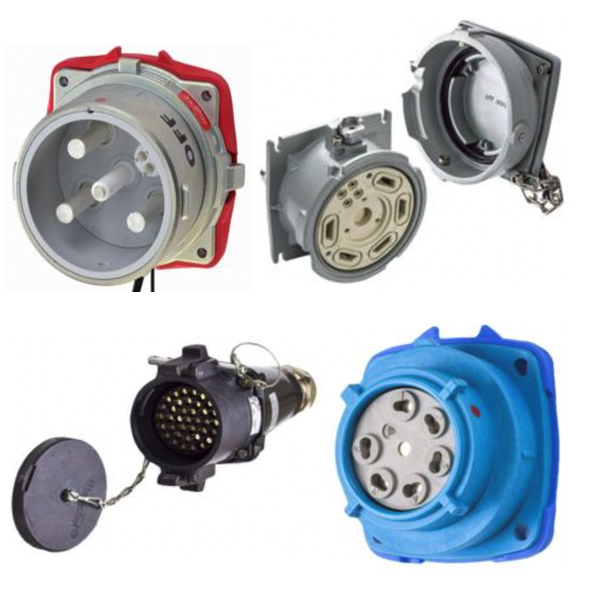Plugs & Receptacles

Plugs and receptacles are fundamental components of electrical systems, providing safe and reliable power connections for industrial, commercial, and heavy-duty applications. Designed to meet standard wiring requirements, these devices ensure secure electrical continuity while supporting repeated connection and disconnection of equipment. RSP Supply carries a full line of plugs and receptacles available in multiple configurations to support varying voltage, amperage, and environmental requirements.
Industrial plugs and receptacles are engineered to handle specific electrical loads and are designed to mate only with compatible devices, reducing the risk of improper connections. Many models feature rugged housings, moisture- and dust-resistant designs, and enhanced grounding to support safe operation in harsh environments. Switch-rated plugs and receptacles provide an added level of protection by incorporating an integral switching mechanism that de-energizes the contacts before the plug can be removed. This design allows operators to visually confirm that power is off, helping reduce arc-flash risk and unintended exposure to live parts.
FAQs
Q: Are industrial plugs and receptacles safe to use in outdoor installations?
Yes, industrial plugs and receptacles can be used outdoors when they are properly rated for the environment and installed according to applicable codes and manufacturer guidelines.
Q: How does a GFCI electrical outlet work when exposed to water?
A GFCI outlet monitors current flow and shuts off power quickly if it detects a ground fault or imbalance, helping reduce the risk of electrical shock when moisture is present.
Q: What are switch-rated plugs and receptacles?
Switch-rated plugs and receptacles include an integral switch that de-energizes contacts before plug removal, providing visual confirmation of power-off and enhanced operator safety.
Q: Which industries commonly use switch-rated plugs and receptacles?
Industries such as manufacturing, food processing, wastewater treatment, and mining commonly use switch-rated plugs and receptacles due to their safety and reliability in demanding environments.
Q: How do I choose the correct plug and receptacle configuration?
Selection depends on voltage, amperage, phase, environmental exposure, and application requirements. Proper matching ensures safe and reliable electrical connections.
Why Buy Plugs and Receptacles for Industrial and Commercial Applications from RSP Supply
RSP Supply offers a comprehensive selection of industrial plugs and receptacles designed for safety, durability, and code compliance. Our product lineup supports reliable power connections across a wide range of industrial and commercial applications, backed by knowledgeable support and trusted electrical manufacturers.

